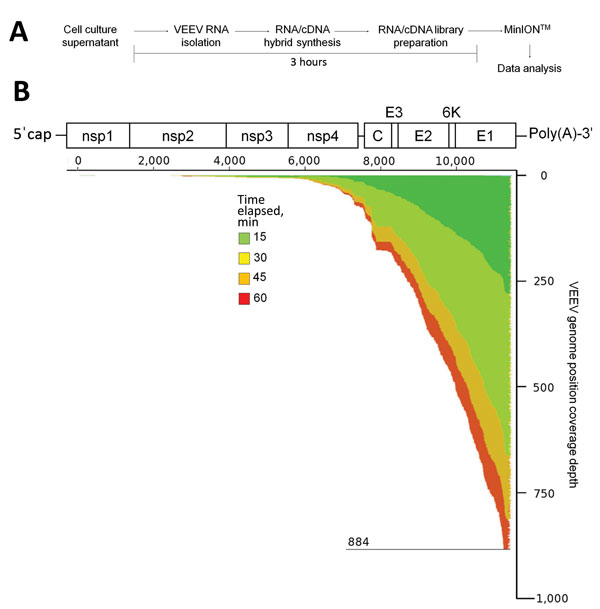Volume 22, Number 8—August 2016
Dispatch
Use of Unamplified RNA/cDNA–Hybrid Nanopore Sequencing for Rapid Detection and Characterization of RNA Viruses
Figure

Figure. Use of unamplified RNA/cDNA−-hybrid nanopore sequencing for genomic characterization of Venezuelan equine encephalitis virus (VEEV) TC-83. A) Sample preparation workflow for nanopore sequencing. First, viral RNA from BHK21 cell cultures of VEEV TC-83 was isolated, then single strand complimentary DNA (cDNA) was synthesized. The resulting RNA/cDNA hybrids were then prepared for nanopore sequencing and sequenced with data analysis occurring in real time. B) Genome organization and sequencing coverage over time of VEEV TC-83. VEEV is an alphavirus; its genome consists of a single strand of positive-sense RNA that can be translated into a polyprotein. Translation is critically dependent on the genomic 3′ poly(A)-tail. This tail can be used for reverse transcription priming by using poly-(dT) primers that anneal to it. Read data was aligned to VEEV TC-83 (accession number L01443) by using the multiple sequence alignment program LAST (Computational Biology Research Consortium, Tokyo, Japan [Technical Appendix]). The coverage map shows the depth of genome coverage over 15, 30, 45, and 60 minutes of sequencing runtime, with the greatest depth observed at the 3′ end of the VEEV genome. Nsp, nonstructural protein; C, capsid; E, envelope